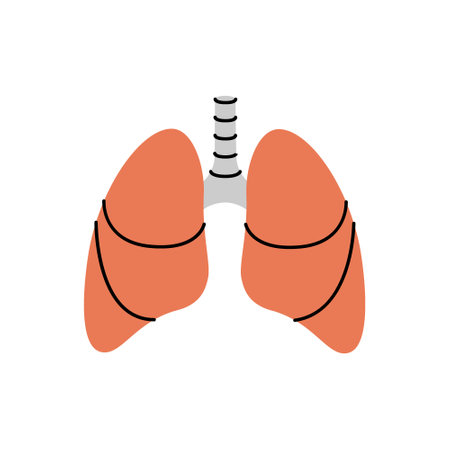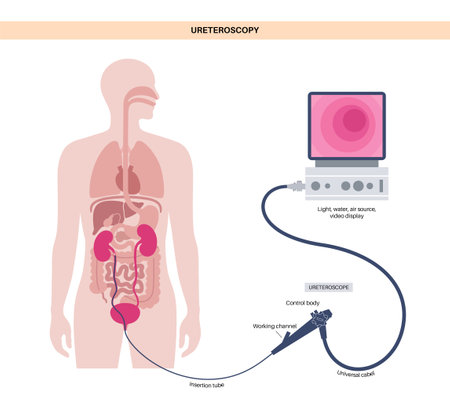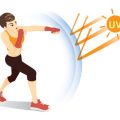Introduction to Stroke Rehabilitation in the UK
Stroke remains one of the leading causes of disability in Britain, with thousands of new cases reported annually. This significant health burden places a considerable demand on the National Health Service (NHS) and related community support structures. In the UK, stroke rehabilitation is a complex process that begins in acute hospital settings and often extends into specialist inpatient units, outpatient clinics, and community-based services. The NHS has established clear care pathways, emphasising rapid assessment and early intervention to maximise recovery potential. However, despite these coordinated efforts, challenges persist, including regional disparities in service availability, varied access to multidisciplinary teams, and resource constraints affecting long-term rehabilitation. Community rehabilitation services play a vital role in supporting individuals as they transition from hospital to home, aiming to promote independence and improve quality of life. The British context also brings unique socio-cultural factors and health system considerations that influence both patient outcomes and the practical delivery of evidence-based gait training interventions following stroke.
2. Principles of Evidence-Based Gait Training
Effective gait retraining for stroke rehabilitation in Britain hinges on rigorous, evidence-based principles designed to optimise patient outcomes and standardise care across the NHS. The cornerstone of such approaches lies in integrating up-to-date clinical research, established guidelines, and individualised patient assessment. In the UK, frameworks such as NICE (National Institute for Health and Care Excellence) guidelines and CSP (Chartered Society of Physiotherapy) recommendations provide the foundation for clinical decision-making in post-stroke gait rehabilitation.
Key Principles Guiding Practice
The following table outlines the core principles underpinning evidence-based gait training within the British context:
| Principle | Description | UK-Specific Guidance |
|---|---|---|
| Patient-Centred Assessment | Comprehensive evaluation of motor, sensory, cognitive, and functional abilities tailored to individual needs. | NICE CG162: Emphasises multidisciplinary assessment and goal setting. |
| Task-Specific Training | Repetitive practice of walking-related activities relevant to daily life. | CSP: Advocates functional task practice in realistic environments. |
| Intensity & Frequency | High-repetition, appropriately challenging sessions to promote neuroplasticity. | NHS England: Recommends regular review and adjustment based on progress. |
| Evidence Integration | Application of contemporary research findings into clinical protocols. | NICE/Stroke Association: Regularly updates protocols based on latest evidence. |
| Multidisciplinary Collaboration | Working with physiotherapists, occupational therapists, and other allied health professionals. | CSP/NHS: Promotes team-based planning and intervention delivery. |
Clinical Guidelines Shaping Gait Retraining
In Britain, clinicians are guided by a combination of national standards and best-practice documents. NICE CG162 and SIGN 118 (Scottish Intercollegiate Guidelines Network) both highlight the importance of early mobilisation, progressive gait re-education, and prevention of secondary complications through structured interventions. These documents urge practitioners to employ outcome measures such as the Functional Ambulation Category (FAC), 10-Metre Walk Test (10MWT), and Rivermead Mobility Index (RMI) to monitor progress objectively and ensure interventions are delivering meaningful benefits for patients. Additionally, person-centred care planning is prioritised, with families involved in goal-setting and discharge planning to support continuity of rehabilitation beyond hospital or clinic settings.

3. Assessment Tools and Outcome Measures
In the context of stroke rehabilitation within Britain, the selection of appropriate assessment tools is fundamental to ensuring evidence-based gait training. The National Health Service (NHS) and community rehabilitation teams rely on a suite of standardised measures to evaluate mobility and walking function. These tools not only help clinicians to identify specific gait deficits, but also provide objective data for setting goals, monitoring progress, and justifying interventions.
Widely Used Gait Assessment Tools
The 10-Metre Walk Test (10MWT) and the 6-Minute Walk Test (6MWT) are among the most commonly adopted quantitative assessments in UK practice. The 10MWT provides a simple yet reliable measure of walking speed over a short distance, which is strongly correlated with community ambulation capability. The 6MWT, meanwhile, assesses walking endurance and functional mobility under sub-maximal effort, reflecting real-world requirements for daily life in British towns and rural areas alike.
Bespoke Outcome Measures for Stroke Survivors
The Berg Balance Scale (BBS) and the Tinetti Performance-Oriented Mobility Assessment are both widely recommended by NICE guidelines for their sensitivity in detecting balance issues post-stroke. The BBS evaluates functional balance through tasks such as standing unsupported or reaching forward—activities closely aligned with independent living outcomes targeted in NHS rehabilitation settings.
Integration into NHS and Community Settings
These assessment tools are readily integrated into multidisciplinary pathways across acute hospitals, outpatient clinics, and home-based therapy services in Britain. Standard operating procedures often include initial screening using the Modified Rivermead Mobility Index (MRMI) or Functional Ambulation Category (FAC), followed by periodic reassessment at key stages of recovery. This approach allows teams to adapt gait training programmes responsively, tailor interventions to individual needs, and ensure alignment with both local commissioning requirements and national quality standards.
The practical application of these outcome measures ensures transparency, facilitates communication within teams, and supports stroke survivors’ engagement in their own rehabilitation journey—hallmarks of effective, patient-centred care throughout the UK.
4. Interventions and Therapies Used Across Britain
In the United Kingdom, gait rehabilitation following stroke is firmly grounded in evidence-based interventions, with a strong emphasis on person-centred care and multidisciplinary collaboration. The approaches used throughout Britain reflect both NICE guidelines and current best practice recommendations from the Chartered Society of Physiotherapy. Below is a summary of the principal gait training interventions supported by robust clinical evidence and commonly utilised in British stroke services.
Task-Specific Practice
The cornerstone of gait rehabilitation is task-specific practice, where individuals repeatedly perform walking-related activities that mimic real-life scenarios. This method is supported by high-quality research demonstrating improvements in walking speed, endurance, and independence. Therapists in Britain often focus on:
- Overground walking with variable surfaces
- Practising transfers and balance tasks
- Dual-task training (walking while performing another activity)
Technology-Assisted Therapies
The adoption of technology in gait training has increased across NHS trusts and private clinics. These interventions are particularly valuable for enhancing intensity and repetition, key factors for neuroplasticity. Commonly used technologies include:
| Technology | Description | Evidence Level |
|---|---|---|
| Treadmill Training (with/without body-weight support) | Enables graded practice of walking at various speeds, often with safety harnesses. | Strong: Supported by multiple RCTs and meta-analyses. |
| Robotic Gait Trainers | Provide repetitive, consistent stepping movements; used mainly in specialist centres. | Moderate: Growing evidence for early-stage recovery. |
| Functional Electrical Stimulation (FES) | Stimulates lower limb muscles to facilitate foot clearance during swing phase. | Strong: Recommended for foot drop management post-stroke. |
The Use of Orthoses
Orthotic devices are routinely prescribed to optimise safety and efficiency during gait retraining. Ankle-foot orthoses (AFOs) are the most frequently used, particularly for individuals with persistent foot drop or knee instability. Recent UK-based trials underline their effectiveness in improving walking ability when combined with active physiotherapy input.
Summary Table: Typical Gait Training Interventions in Britain
| Intervention Type | Main Applications | NHS Availability |
|---|---|---|
| Task-specific practice | All phases of recovery; tailored to functional goals. | Widely available via community and inpatient teams. |
| Treadmill/robotic-assisted therapy | Early intensive rehabilitation; severe mobility impairments. | Mainly in specialist neurorehabilitation centres. |
| FES devices | Treatment of foot drop; adjunct to walking practice. | Available via some NHS trusts following assessment. |
| AFOs and other orthoses | Knee/ankle stability; prevention of falls. | Prescribed by NHS orthotics or physiotherapy teams. |
Cultural Considerations in British Practice
The British approach consistently values patient preferences, shared goal-setting, and a pragmatic use of available resources. Community-based rehabilitation is prominent, with support for ongoing self-management through local stroke groups, digital tools, and follow-up by community physiotherapists. Ongoing professional development ensures that clinicians remain up-to-date with emerging therapies and adapt interventions to the diverse needs of people recovering from stroke across the UK.
5. Role of the Multidisciplinary Team
Within the British healthcare system, a truly effective gait rehabilitation programme for stroke survivors hinges on the collaborative efforts of a multidisciplinary team (MDT). The core members typically include physiotherapists, occupational therapists, speech and language therapists, as well as rehabilitation consultants and nurses. Each professional brings their own expertise to bear, ensuring that interventions are tailored to the complex needs of individuals recovering from stroke.
Physiotherapists: Leading Gait Retraining
Physiotherapists often take the lead in gait retraining, applying evidence-based interventions such as task-specific exercises, manual facilitation, and balance training. Their role extends beyond physical practice; they also assess safety, recommend mobility aids, and monitor progress using objective outcome measures aligned with British clinical guidelines. Their input is vital in setting realistic goals and adjusting therapy plans according to patient progress.
Occupational Therapists: Functional Integration
Occupational therapists complement physiotherapy by focusing on how improvements in gait can be integrated into daily life. They assess the home environment, suggest adaptive equipment, and work on practical tasks such as navigating stairs or uneven pavements—common features in British homes and communities. This functional approach supports holistic recovery and promotes independence.
Collaborative Practice in NHS Settings
The British context emphasises regular MDT meetings where professionals share insights and coordinate care. For example, physiotherapists may highlight specific gait impairments while occupational therapists contribute strategies for safe community mobility. Speech and language therapists might address any co-existing communication or swallowing issues affecting participation. Rehabilitation consultants oversee medical management and ensure that all aspects of care adhere to national standards set by NICE or SIGN guidelines.
Patient-Centred Care
A hallmark of British rehabilitation is involving patients and families in decision-making. The MDT works closely with patients to establish meaningful goals and create bespoke rehabilitation plans. This collaborative ethos ensures that gait training addresses not just physical deficits but also psychosocial factors, ultimately improving quality of life after stroke.
6. Barriers, Facilitators, and Service User Perspectives
Common Challenges in Gait Training Implementation
Delivering evidence-based gait training for stroke rehabilitation across Britain faces a series of practical and systemic challenges. One significant barrier is the variation in access to specialist physiotherapy services between urban and rural regions, often influenced by NHS resource allocation and local commissioning priorities. Additionally, long waiting lists and limited session durations can hinder patients’ progress towards optimal recovery. Equipment shortages and a lack of dedicated rehabilitation spaces further restrict the opportunities for intensive, repetitive task practice that evidence suggests is crucial for gait retraining.
Service User Preferences and Engagement
Understanding the perspectives of service users—stroke survivors themselves—is essential in designing effective gait training programmes. Many British patients express a strong preference for community-based or home-based interventions over hospital settings, valuing convenience and familiarity. However, patient motivation can fluctuate, especially when faced with slow progress or setbacks; therefore, person-centred goal setting and regular feedback are key facilitators for sustained engagement. Culturally sensitive communication, including the use of plain English and consideration of diverse backgrounds, also plays a vital role in supporting adherence to rehabilitation plans.
Accessibility Issues and Health Inequalities
Socioeconomic factors remain a persistent barrier to equitable stroke rehabilitation outcomes in Britain. Individuals from lower-income backgrounds may face additional obstacles such as transport costs, digital exclusion (where remote or app-based interventions are used), or limited informal support at home. Furthermore, regional disparities in health service provision mean that some communities experience delayed or less comprehensive access to gait retraining. Tackling these inequalities requires coordinated efforts from clinicians, commissioners, and policymakers to ensure that all patients—regardless of postcode or personal circumstance—can benefit from best-practice approaches.
Enablers for Effective Practice
Despite these barriers, several enablers support the implementation of high-quality gait training. Interdisciplinary teamwork within rehabilitation teams allows for more holistic care planning and resource sharing. Investment in continuing professional development ensures that staff remain up-to-date with current evidence and innovative practices. The increasing adoption of telehealth solutions has improved access for some patients, particularly those with mobility limitations or living in remote areas. Peer support groups and patient advocacy organisations, such as the Stroke Association UK, also provide valuable information and encouragement throughout the recovery journey.
Towards Inclusive and Responsive Rehabilitation Services
Addressing barriers while maximising facilitators requires ongoing dialogue with service users to refine pathways and personalise interventions. By systematically capturing patient feedback and learning from lived experiences, British stroke rehabilitation services can continue evolving towards greater inclusivity, effectiveness, and equity in gait training provision.
7. Future Directions and Innovations
The landscape of gait rehabilitation for stroke survivors in Britain is poised for significant transformation, fuelled by emerging research, NHS-funded projects, and technological advancements. As the demand for high-quality, evidence-based interventions continues to grow, both clinicians and researchers are collaborating to bridge the gap between scientific innovation and everyday clinical practice.
Emerging Research Initiatives
Recent years have seen a surge in UK-led studies investigating novel approaches to gait training. Universities across Britain, often in partnership with NHS Trusts, are piloting innovative interventions such as wearable robotics, real-time biofeedback systems, and immersive virtual reality environments. Early findings suggest that these technologies can offer tailored feedback, promote patient engagement, and potentially accelerate functional recovery compared to conventional therapies.
NHS-Funded Projects
The NHS continues to invest in large-scale projects aimed at integrating new rehabilitation technologies into routine care. For example, the National Institute for Health and Care Research (NIHR) has backed several multicentre trials evaluating the effectiveness of overground exoskeletons and intelligent treadmill systems. These projects not only assess clinical outcomes but also consider cost-effectiveness and feasibility within typical NHS service models—a critical factor for wide adoption across the UK.
Anticipated Advancements in Practice
Looking ahead, British gait rehabilitation is expected to become more personalised, data-driven, and community-focused. Advances in artificial intelligence and machine learning are likely to enable more precise monitoring of progress and adaptation of training protocols. Additionally, there is growing emphasis on delivering services closer to home—through digital platforms or home-based devices—reflecting NHS priorities around accessibility and patient-centred care.
Challenges and Opportunities
Despite these promising developments, several challenges remain. Ensuring equitable access to new technologies across urban and rural settings, addressing digital literacy among patients and practitioners, and maintaining robust evidence standards will all be key concerns moving forward. Nonetheless, Britain’s collaborative research culture and strong public health infrastructure position it well to lead the way in next-generation gait rehabilitation.


